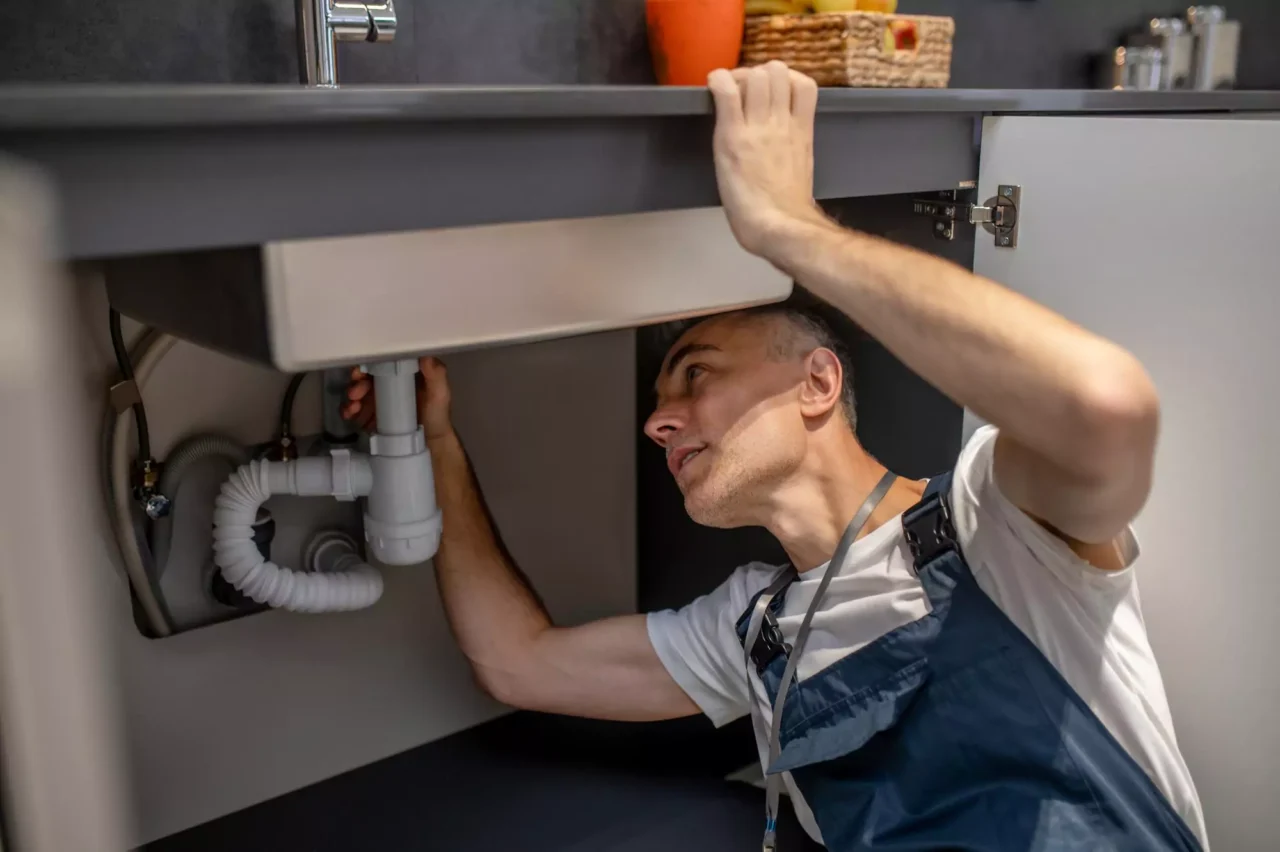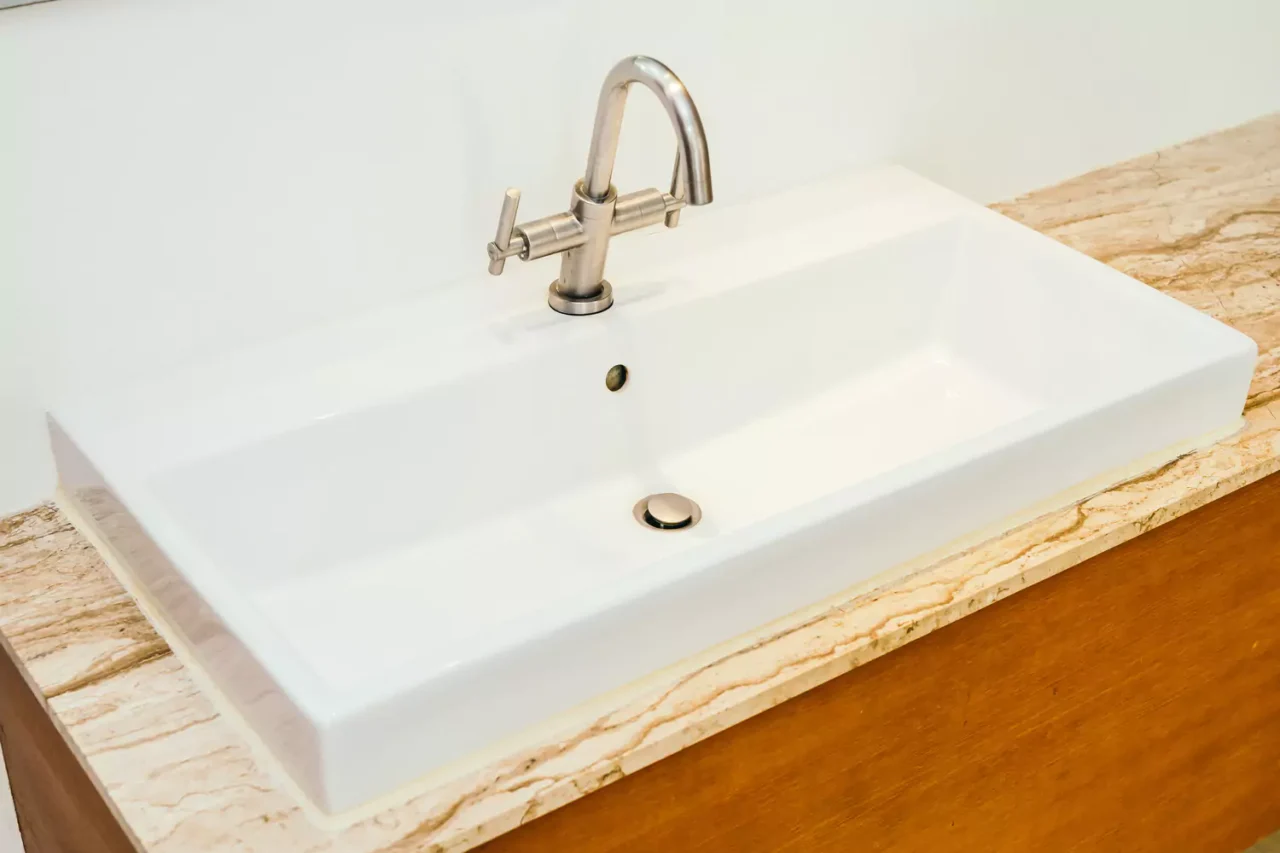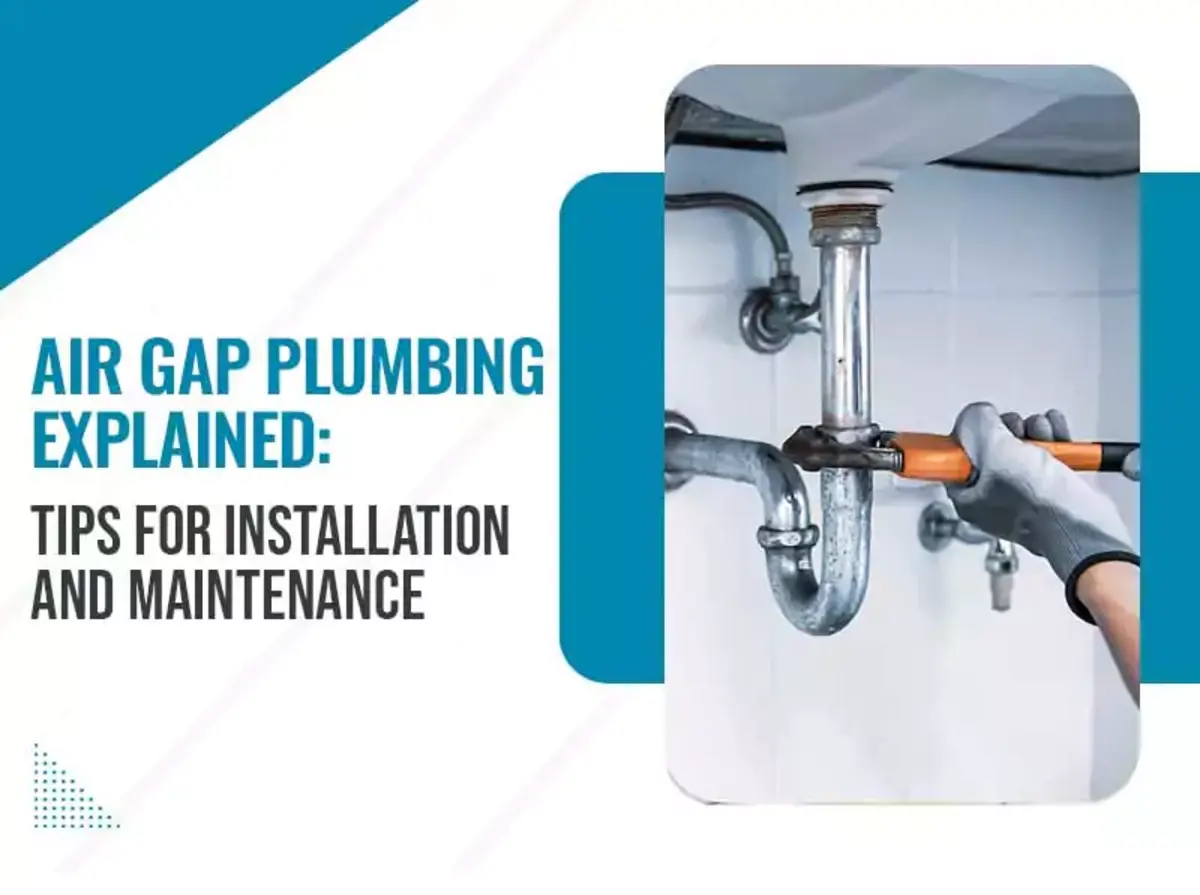Have you ever wondered how your home’s plumbing system keeps your drinking water clean and safe? The answer lies in a small yet powerful feature known as air gap plumbing.
This essential safeguard prevents dirty water from contaminating your clean water supply, protecting your family from potential health risks. Whether you’re dealing with a dishwasher, sink, or commercial plumbing setup, understanding concept of air gap is quite important.
In this guide, we’ll break down everything you need to know about air gap systems, how they work, and why they’re a vital part of your plumbing system.
What is Air Gap Plumbing?
It refers to a physical space between a water outlet, like a faucet or drain hose, and the flood level rim of a fixture such as a sink or dishwasher. This space ensures that dirty water cannot flow back into the clean water supply.
For example, in your kitchen, the air gap fitting is usually installed on the countertop near your sink. It prevents wastewater from backing up into your dishwasher during drainage. Without this gap fitting, dirty water could contaminate your dishwasher or clean water supply.

Why is Air Gap Plumbing Important?
Air gap prevents backflow, which happens when dirty water travels backward into clean water lines. This backflow can occur due to pressure changes in the water supply. Situations like clogged drains, sudden drops in water pressure, or even a hose left in dirty water can create contamination risks.
A properly installed air gap drain prevents such risks. It relies on gravity and physical separation to ensure wastewater and clean water remain separate. This simple design acts as a strong safeguard against contamination.
How Does Air Gap Plumbing Work?
Air gap relies on a straightforward principle. A gap is created between the water source and the drainage area. In a dishwasher air gap installation, wastewater flows through the drain hose, rises into the air gap fitting, and then drains into the garbage disposal or sink drain.
If a blockage occurs, wastewater overflows through the air gap cover rather than backing up into your dishwasher. This prevents cross-contamination and keeps your water supply safe.

For sinks, the air gap sink design creates a physical barrier between the faucet outlet and the flood level rim. Even if the sink fills with dirty water, the water cannot reach the faucet outlet.

Types of Air Gap Fittings
There are several types of air gap devices used for different applications:
- Dishwasher Air Gap Installation: Prevents dirty water from backing into your dishwasher. It uses that same PVC air gap principle to ensure separation.
- Sink Air Gap Fitting: Installed under sink air gaps prevent water contamination from clogged drains.
- Reverse Osmosis (RO) Air Gap: Used in water filtration systems to prevent contaminated drain water from flowing back into purified water.
- Sump Pump Air Gap: Prevents water from sump pump discharge lines from contaminating the clean water supply.
- Commercial Sink Air Gap: Required by plumbing codes in restaurants and industrial kitchens to ensure sanitation.
Common Air Gap Applications
Air gap isn’t limited to dishwashers and sinks. It also applies to other plumbing fixtures:
- Floor Drain Air Gap: Used in commercial or industrial buildings.
- Sump Pump Air Gap: Ensures safe discharge of water from sump pumps.
- Air Gap for Commercial Sink: Mandatory for commercial kitchens.
- Air Gap for Floor Drain: Installed in spaces requiring additional safety.
- Under Sink Air Gap: Commonly seen in residential kitchens.
Each application serves the same purpose: preventing backflow and keeping drinking water clean.
Air Break Plumbing vs. Air Gap Plumbing
While air gap uses a physical separation to prevent contamination, air break plumbing relies on indirect connections between the water source and drain. Air breaks are often used in sump pump discharge and other large drainage systems.
However, air gaps are generally more reliable in smaller residential systems like dishwashers and sinks.
Installing Air Gap Plumbing
Installing an air gap fitting is relatively straightforward, but it must be done correctly:
- Locate the Installation Point: Usually on the countertop near the sink.
- Insert the Air Gap Fitting: Secure it using a nut and washer.
- Connect Drain Hoses: Attach the dishwasher drain hose and the discharge pipe.
- Secure Connections: Use hose clamps to prevent leaks.
- Test Water Flow: Ensure there are no leaks or blockages.
Maintaining Air Gap Plumbing
Proper maintenance ensures long-term performance:
- Regularly clean the air gap cover.
- Inspect drain hoses for clogs.
- Flush the system with hot water to remove debris.
- Schedule professional inspections annually.
Air Gap Plumbing Codes and Standards
Air gap systems are heavily regulated under plumbing codes worldwide. These codes ensure that air gap systems are designed, installed, and maintained properly to prevent water contamination.
- International Plumbing Code (IPC): The IPC outlines the minimum requirements for air gap installations, specifying that an air gap must be at least twice the diameter of the water outlet.
- Ontario Building Code (Canada): The regulation mandates a minimum air gap of 25 mm and specifies that the air gap must be free from obstructions and placed in non-toxic environments.
- American Society of Mechanical Engineers (ASME) A112.1.2: This standard specifies design requirements for plumbing air gap fitting systems to prevent backflow in residential and commercial applications.
- EN 13076 (Europe): Specifies requirements for unrestricted air gaps in potable water systems.
- National Standard Plumbing Code (NSPC): Provides guidelines for dishwasher air gap installation, plumbing air gap fitting setups, and under sink air gap applications.
- State and Local Plumbing Codes: These may have additional specifications tailored to local environmental conditions.
Compliance with Plumbing Codes
When installing air gap , compliance with these standards is crucial. Failing to meet code requirements can lead to contamination risks, plumbing failures, and even legal penalties.
Professional plumbers are trained to ensure that air gap systems adhere to these codes. Regular inspections by certified inspectors help guarantee compliance.
Common Problems with Air Gap Plumbing
Some common issues include:
- Blockages: Debris can clog the air gap fitting.
- Leaks: Loose hose clamps or cracked PVC pipes.
- Odors: Stagnant water in the air gap plumbing drain.
Regular maintenance can resolve these issues and ensure smooth operation.
Air Gap Alternatives
In places where air gap isn’t mandated, high loops and standpipes may be used. However:
- High Loops: Drain hoses are looped high under the sink to prevent backflow.
- Standpipes: Vertical pipes direct wastewater safely.
While these alternatives offer some protection, they are not as effective as air gap plumbing systems.
Final Thoughts
Air gap plumbing is a simple yet essential safeguard for protecting your home’s water supply. Whether you’re installing an air gap sink, dishwasher air gap, or sump pump air gap, proper installation and maintenance are crucial.
Always follow plumbing codes and consult a professional plumber for complex installations. By prioritizing air gap plumbing, you’re investing in the health and safety of your household.
For expert assistance, reach out to a licensed plumber today. Clean, safe drinking water starts with a reliable air gap system!

